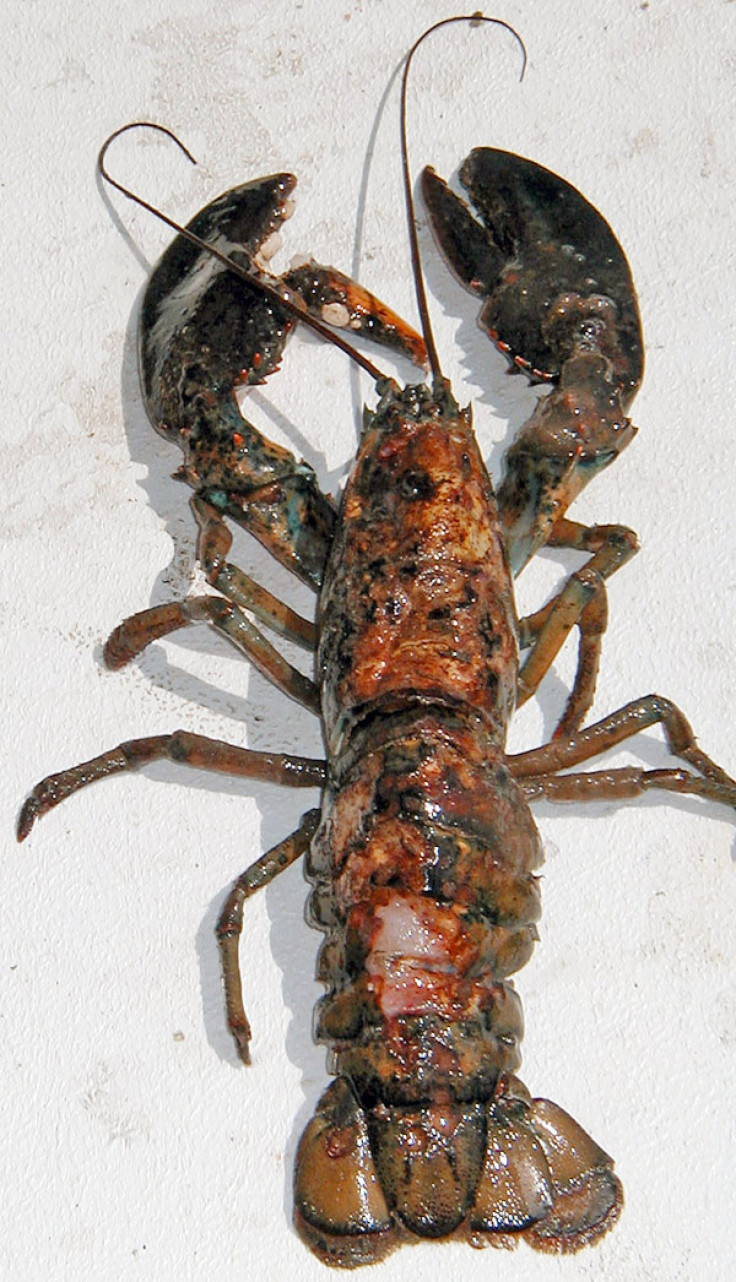Lobster Shell Disease: Should Maine Lobstermen Be Concerned? [PHOTO]

Maine lobsters may be threatened with a shell disease that has plagued New England lobsters for years.
Lobster shell disease is a disfiguring condition where black lesions form on lobster’s shells that look like cigarette or acid burns. While not harmful to humans, the disease makes the lobsters unsightly and unmarketable, the Associated Press reports.
Since the 1990s the disease has been spotted on lobsters in southern Massachusetts and Rhode Island. In Maine, few are affected – one out of every 1,000 lobsters were infected last year. But scientists and lobsterman say the prevalence of the disease has grown.
But that number is relatively small compared to Rhode Island, where 18 percent to 34 percent of lobsters caught off its shores are affected each year. In Massachusetts, the prevalence of the disease peaked at 38 percent in 2011.
‘‘From talking to fisherman from Massachusetts on up, it seems like each year it’s moving its way north a little bit,’’ Arnold Gamage Jr., a South Bristol lobsterman who’s been fishing all his life, told the AP about the cases in Maine.
But many lobstermen agree that the numbers in Maine aren’t big enough to draw major concern.
‘‘It’s certainly something to keep an eye on. But in terms of our perspective of Gulf of Maine shell disease, we don’t see it as something to get particularly concerned about,’’ Tracy Pugh, a fisheries biologist with the Massachusetts Division of Marine Fisheries, told AP. ‘‘The rates are pretty low. We don’t see a pattern.’’
Gamage agrees. ‘‘If we go all day long and I see a few that have shell disease, I think to myself, ‘That’s a lot,'’’ he said. ‘‘And I suppose it is a lot compared to none. But it’s still a very small number; it’s way less than 1 percent.’’
In areas where the shell disease is prevalent, the results can be devastating for lobsterman who have a hard time selling the unattractive crustacean. Between 1998 and 2004 in Massachusetts’s Buzzards Bay, the disease caused lobsterman to go out of business, creating a 50 percent decline in lobster catches in the area, according to the Woods Hole Oceanographic Institution.
Researchers are still at a loss as to what causes the disease but point to potential factors such as warming ocean waters, fishing pressures and increased exposure to chemical pollution. Since the disease is not spread between lobsters, researchers have theorized that it may be caused by hormonal imbalances or compromised immune systems potentially caused by certain chemicals.
“Lobsters can actually molt out of shell disease,” Tim Verslycke, a biologist at Woods Hole Oceanographic Institution, said, explaining that lobsters have the capacity to shed the disease once they grow out of their shells. “But if they are exposed to a chemical that limits their capacity to molt or otherwise interferes with their hormone systems, it would make them more vulnerable to any kind of additional stress,” he added.
© Copyright IBTimes 2024. All rights reserved.












